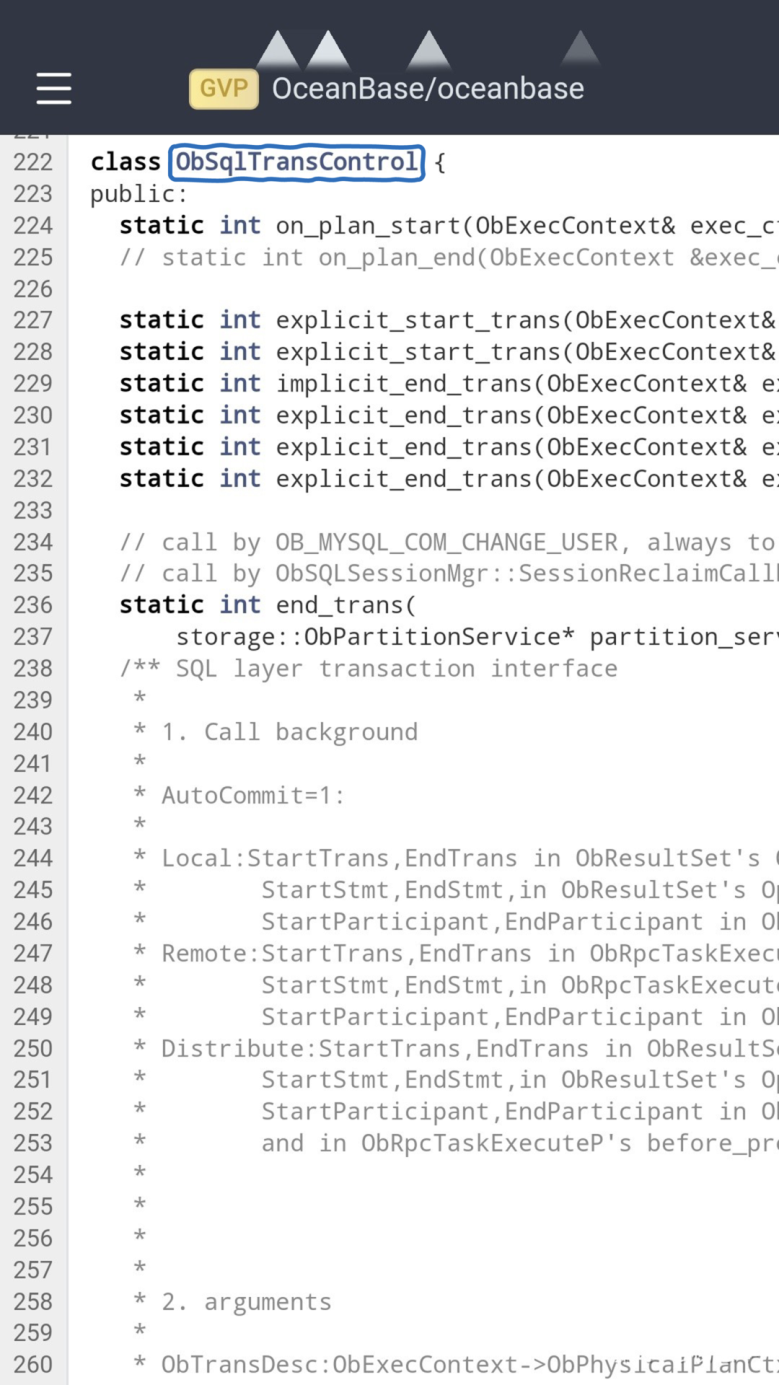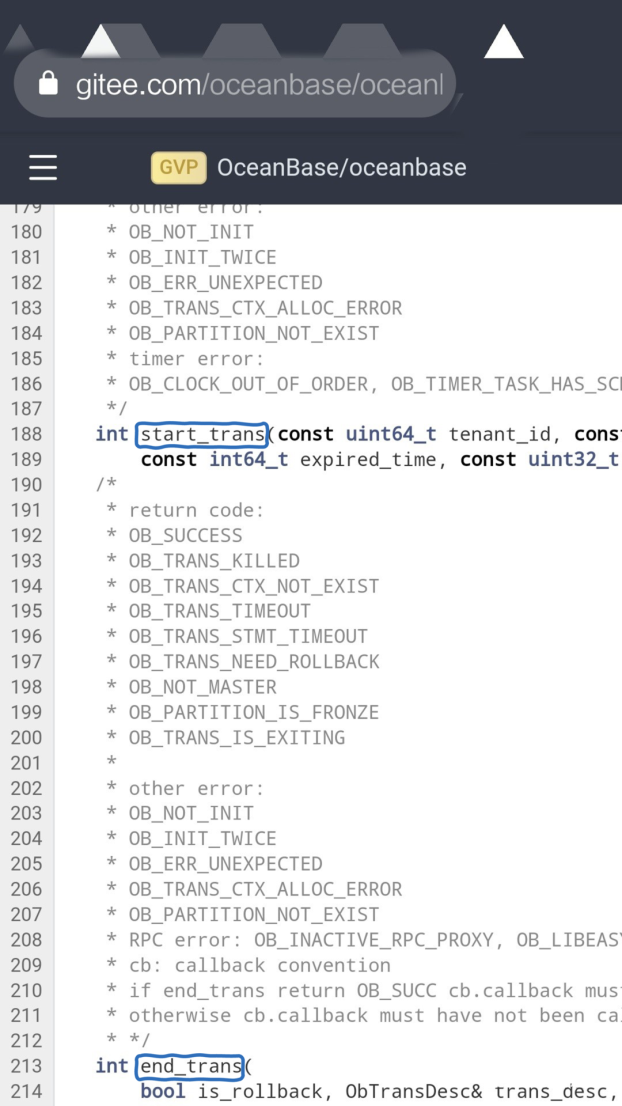By Zhuweng, OceanBase R&D Director
The source code is the most fundamental part of OceanBase. This series of articles focuses on the interpretation of the source code to help users understand the nature of the database. The third article of this series (Interpretation of the Source Code of OceanBase (3): Life of Partition) was about the storage layer of OceanBase. The first section was about communication protocols obmp_query but skipped the details of transaction control. The fourth article of this series introduces information about the external interfaces of transactions.
The protocol layer covers the original interfaces provided by the transaction layer. The source code is located in sql/ob_sql_trans_control.h. The following screenshot shows additional information. This coverage maintains the TransState and is available for the SQL layer to call. When statements are completed, the correct transaction interface is called at a unified location according to TransState, so transaction resources are not leaked in any abnormal state.

Original transaction interfaces are located in the source code file storage/transaction/ob_trans_service.h. The main interface is:
start_trans & end_trans (please see the screenshot)start_stmt & end_stmt
start_participant & end_participant
They correspond to the access lifecycle of transactions, statements, and participants (partitions) in statements. After the transaction is opened by the start trans, an ObTransDesc object is returned. As the only identifier of the transaction, the object is saved in the object session. It is required by other transaction interfaces and subsequent statement execution. It is also commonly used for problem diagnosis.

Before the execution, the position of the leader is acquired from the location cache based on the partition information involved in the statement to select the execution plan for the corresponding category. In general, an SQL query or DML generates three types of execution plans (ObPhyPlanType ):
local plan indicates that all leaders of partitions to be accessed to execute the statement are on this node.remote plan indicates that all leaders of partitions are on a remote node.distributed plan indicates that the leader of a partition is on multiple nodes.Location cache is an important component of an overall architecture, which is used to find information about partition copies efficiently. It provides a unified interface outside but shields many distributed details. Its body implementation is located in share/partition_table (please see the screenshot). However, the source file sql/ob_sql_partition_location_cache.h covers it and unifies the processing of virtual tables.
Transaction control calls often involve a variety of factors:
For example, for the local plan, the transaction commits automatically and is executed on the code in order start_trans ➡ start_stmt ➡ start_participant ➡ end_participant ➡ end_stmt ➡ end trans. For the remote plan, the transaction commits automatically. The interfaces above are all executed on the remote node. For the distributed execution plan, start/end_stmt is executed on this node while start/end_participant is executed on the node where each partition leader is located. This set of interfaces is designed to balance simplifying transaction interfaces and optimizing transaction performance by scenario.

This is the life of the transaction of OceanBase. The fifth article of this series explains information related to the multi-tenant architecture of OceanBase.
An Interpretation of the Source Code of OceanBase (3): Life of Partition
An Interpretation of the Source Code of OceanBase (5): Life of Tenant
OceanBase - September 9, 2022
OceanBase - September 9, 2022
OceanBase - September 9, 2022
OceanBase - September 14, 2022
OceanBase - September 13, 2022
OceanBase - May 30, 2022
 ApsaraDB for OceanBase
ApsaraDB for OceanBase
A financial-grade distributed relational database that features high stability, high scalability, and high performance.
Learn More Managed Service for Prometheus
Managed Service for Prometheus
Multi-source metrics are aggregated to monitor the status of your business and services in real time.
Learn More YiDA Low-code Development Platform
YiDA Low-code Development Platform
A low-code development platform to make work easier
Learn More Phone Number Verification Service
Phone Number Verification Service
A one-stop, multi-channel verification solution
Learn MoreMore Posts by OceanBase